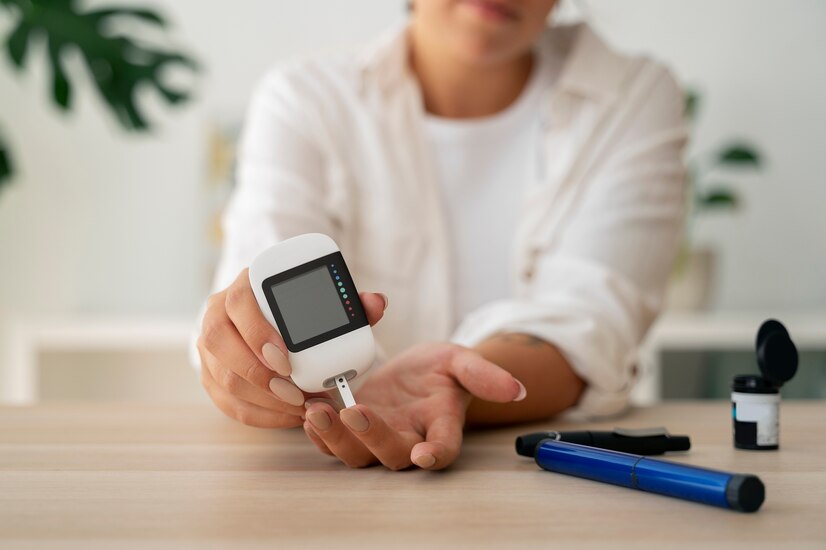Diabetes can feel like a relentless rollercoaster ride, with blood sugar levels soaring and plunging without warning. But fear not, fellow riders! Taking control of your blood sugar through self-monitoring is the key to unlocking a smoother, healthier journey. In this blog, we’ll equip you with the knowledge and tools to become a pro at Blood Sugar Monitor usage and empower you to confidently manage your diabetes.
Why is Self-Monitoring Important?
Imagine driving blindfolded in rush hour traffic – that’s what managing diabetes without Blood Sugar Monitors feels like. These handy devices are your windows to the world of your blood sugar levels, revealing valuable insights that empower you to:
- Make informed decisions: Did that new exercise routine spike your sugar? A Blood Sugar Monitor tells you so, helping you adjust your diet or activity plan accordingly.
- Identify trends: Track your readings over time to spot hidden patterns, like how stress affects your glucose levels.
- Prevent complications: Early detection of high or low blood sugar allows you to intervene promptly, preventing serious health issues.
- Gain peace of mind: Knowing your blood sugar is under control reduces anxiety and empowers you to live life to the fullest.
Mastering the Art of Self-Monitoring: Your Guide
Now, let’s delve into the practicalities of using a Blood Sugar Monitor:
Choosing the Right Monitor:
- Consider your needs: Do you prefer a basic or advanced model? Do you need features like Bluetooth connectivity or voice guidance?
- Talk to your doctor: They can recommend a monitor that aligns with your specific condition and lifestyle.
Testing Techniques:
- Wash your hands thoroughly: Hygiene is crucial to avoid infections.
- Use a lancet device: This pricks your fingertip for a tiny blood sample. Most devices offer adjustable depths for comfort.
- Apply the blood sample to the test strip: Follow the specific instructions for your monitor.
- Record your results: Note down the reading, date, and time. Many monitors store readings automatically.
Interpreting Your Readings:
- Understand your target range: Your doctor will set personalized goals based on your health status.
- Learn the signs of high and low blood sugar: Feeling shaky, sweaty, or confused? These could be warning signs.
- Know what to do: Have a plan in place to address high or low readings, as advised by your doctor.
Real-Life Example:
Sarah, a busy professional with type 2 diabetes, initially felt overwhelmed by self-monitoring. However, a Blood Sugar Monitor became her game-changer. By tracking her readings after meals and exercise, she identified how certain foods affected her sugar levels. This empowered her to make informed dietary choices, leading to improved blood sugar control and reduced anxiety.
Beyond the Numbers: Adding Value to Your Life
Self-monitoring with a Blood Sugar Monitor is more than just numbers; it’s about reclaiming control and living your best life. Here are some tips:
- Set realistic goals: Celebrate small wins and don’t get discouraged by setbacks.
- Find a support system: Connect with other people with diabetes for encouragement and shared experiences.
- Reward yourself: Acknowledge your progress and celebrate milestones with healthy treats.
Remember, you’re not alone in this journey. With the right tools, knowledge, and support, you can become an expert at self-monitoring and navigate the ups and downs of diabetes with confidence. So, embrace your Blood Sugar Monitor, empower yourself with information, and ride the diabetes rollercoaster with newfound control and freedom!

1 thought on “Tame the Rollercoaster: Mastering Blood Sugar Control with Self-Monitoring”